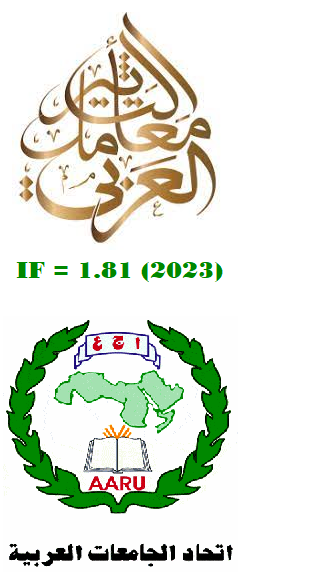Implementing Analysis of Ordinal Regression Model on Student’s Feedback Response
Abstract
Instruction is a multidimensional procedure including a quantity of features, e.g., tutor qualities, that occasionally are hard to assess. In certain points, education efficiency, that is a part of instructing, is affected by a combination of teacher features for example, capacity and clarity to encourage the students to make them study of his subjects, capacity to establish the lesson also with trainings and lectures. These aspects are not only attributable to motivate students, but also age, gender, prior experiences, As more and more the effectiveness of teaching is becoming even more significant in school evaluation system, it is, indeed, essential to discover how to assess it and find the significant related factors for giving the best rank of feedback to their tutors. This paper focuses the assessment of teaching effectiveness forum from students’ perspective “Feedback”, examine the questionnaires provided to the students of Cihan University at the end of their courses and discover the most effected teacher’s characteristics. The outcome variable (Student’s Feedback) was recorded on well-ordered, five-point scale of Likert provided by the students, to a set of independent variables to teacher level. The major techniques elaborated in the model fitting for ordinal regression were stating which independent variables are most likely to be kept in the model and selecting the link function such as, (logit link, complementary log-log link, negative log-log link and probit link) which verified the model suitability. Further to that, several statistical diagnoses have conducted like the model fitting, classification accuracy and the validity assumptions of the model, which is parallel lines, were fundamentally calculated in choosing the best fitted model. The dataset implemented in the analysis entails of almost (21566) respondents to the formed questionnaire in relation to courses of Cihan University for the 2018 – 2019 academic year.
Downloads
References
Abrami, P.C. (1989). How should we use student rating to evaluate teaching? Research in Higher Education, 30, 221-227.
Aitkin, M. and Longford, N. (1986) : Statistical modelling issues in school effectiveness studies. J. R. Stat. Soc. A, 149, 1-43.
Arreola, R.A. (1995). Developing a Comprehensive Faculty Evaluation System. Boston, Mass.: Anker.
Bender, R. and Benner. A (2000). Calculating ordinal regression models in SAS and Splus. Biometrical Journal, vol. 42, pp. 677-699.
Cox, D. R., and E. J. Snell. (1984). The Analysis of Binary Data, 2nd ed. London: Chapman and Hall.
Dillon, W.R. and Goldstein, M. (1984). Multivariate Analysis. New York: Wiley.
Goldstein, H. (1997). Methods in school effectiveness. Research. School Effectiveness and School Improvement, 8, 369-395.
Goldstein, H. and Spiegelhalter, D. J. (1996). League tables and their limitations: Statistical issues in comparisons of institutional performance. J. R. Stat. Soc. A, 159, 385-443.
Hales, D.N. and Chakravorty, S.S. (2006). Implementation of Deming's style of quality management: An action research study. International Journal of Production Economics, vol. 103, pp. 131-148.
Long, J.S. (2003). Regression Models for Categorical Dependent Variables using Stata. Texas: Stata Press.
Marsh, H.W. (1987). Student’s evaluations of university teaching: Research findings, methodological issues, and directions for future research. International Journal of Educational Research. Volume 11, Issue 3, pp, 253-388.
McCullagh, P. and J.A. Nelder. (1980). Generalized Linear Model. New York: Chapman and Hall.
Ryan, J.M., Harrison, P.D. The relationship between individual instructional characteristics and the overall assessment of teaching effectiveness across different instructional contexts. Res High Educ 36, 577–594 (1995). https://doi.org/10.1007/BF02208832
Staus, A. (2008). An ordinal regression model using dealer satisfaction data. Journal of Economics, vol. 112, pp. 168-172.
Winship, C and Mare, R. (1984). Regression models with ordinal variables. American Sociological Review, vol. 49, pp. 512-525.
Copyright (c) 2021 Dler H. Kadir, Ameera W. Omer

This work is licensed under a Creative Commons Attribution-NonCommercial-NoDerivatives 4.0 International License.
Authors who publish with this journal agree to the following terms:
1. Authors retain copyright and grant the journal right of first publication with the work simultaneously licensed under a Creative Commons Attribution License [CC BY-NC-ND 4.0] that allows others to share the work with an acknowledgment of the work's authorship and initial publication in this journal.
2. Authors are able to enter into separate, additional contractual arrangements for the non-exclusive distribution of the journal's published version of the work (e.g., post it to an institutional repository or publish it in a book), with an acknowledgment of its initial publication in this journal.
3. Authors are permitted and encouraged to post their work online (e.g., in institutional repositories or on their website) prior to and during the submission process, as it can lead to productive exchanges, as well as earlier and greater citation of published work (See The Effect of Open Access).









